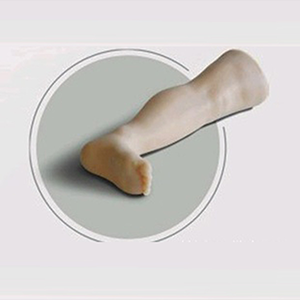11-02-2025
ADA MED SUPPLY LIMITED
Article tag: Pediatric bone puncture model BIX-FS6 Medical teaching model
Pediatric bone puncture, as an important clinical procedure, is widely used in diagnosis and treatment, especially in emergency and critical care medicine. With the continuous development of medical education, pediatric bone puncture model, as a simulation training tool, has become an important means to train the skills of medical personnel. Through repeated training, students can improve their operational skills, but whether they can cope with the changing practical situations in the clinic is still a topic worth discussing.

Role of teaching model
Pediatric bone puncture models usually simulate all aspects of children's bone marrow puncture through simulation materials and design. These models not only help students familiarize themselves with the standard operating procedure of bone puncture, but also allow them to practice how to deal with different operating difficulties, such as patient discomfort, puncture site selection, and operation accuracy. In the simulated environment, students can gradually accumulate operational experience through repeated practice, and reduce mistakes that may occur in the real environment.
In addition, the teaching model provides a risk-free practice environment where students can focus on technical refinement and mastery of detail without clinical pressure. With the continuous development of technology, modern pediatric bone puncture models often have a higher degree of imitation, so that students can feel the real feel and feedback during the operation, so that they are better prepared to face the real clinical situation.
Personal growth
For medical professional students, repeated training of pediatric bone puncture model not only improves their technical level, but also promotes personal growth. Through repeated practice, students can increase their confidence and reduce the mistakes that may be caused by nervousness in real operation. At the same time, the model training also cultivates the trainees' clinical thinking and problem-solving skills, enabling them to make quick and effective decisions when confronted with unexpected situations.
However, while repeated model training can help students become proficient in the technology, the changes and uncertainties encountered in the real clinic still require a high degree of adaptability and clinical experience from the medical staff. Although the model can simulate common clinical situations, for patients with complex conditions or special constitutions, doctors still need to flexibly respond through real-time observation and adjustment.
Data support
A number of studies have shown that trainees who use pediatric bone puncture models for repeated training can significantly improve the accuracy and success rate of the operation. According to one study, health care workers who underwent simulation training had more than a 30% increase in their success rate the first time they actually did it. Another study showed that health care workers trained in bone puncture simulations experienced a 20 percent reduction in complications in practice. These data show that model training does have a positive effect on the improvement of operational skills.
However, the data also show that relying on model training alone is not enough to fully address clinical changes. A survey showed that although simulation training improves basic operational skills, clinical experience and emergency response ability are still key factors affecting the success of operations in the face of individual patient differences, clinical complexity and emergency situations.
Summary
The repeated training of pediatric bone puncture model undoubtedly provides an effective practice platform for students, which helps to improve the accuracy of operation, reduce errors and enhance self-confidence. However, although model training can help students familiarize themselves with basic operating procedures and accumulate certain experience, in the face of clinical changes and complex situations, clinical experience and adaptability are still needed. Therefore, model training should be combined with clinical practice, and through continuous accumulation of experience, we can better cope with various clinical challenges.